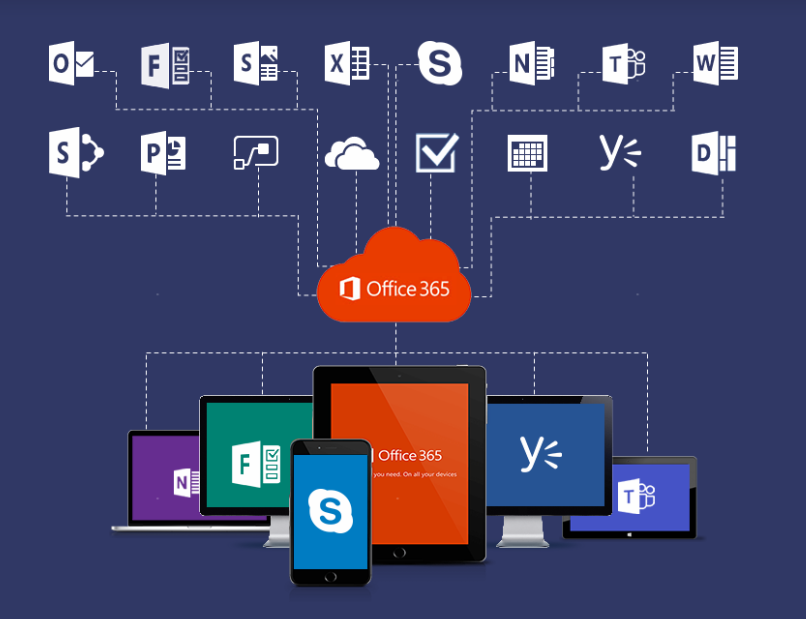Outdated infrastructure and overworked email systems can pose a huge problem to businesses as they result in database corruption, server malfunctions, and gross inefficiencies and errors that can stop their business operations in its tracks. A migration to a more sophisticated email cloud server like Office 365 is usually required, however, this comes with its own set of challenges. Let us explore the challenges of Office 365 migration in more detail to understand just how to circumvent them in the future.
Extensive Planning
One important Office 365 migration challenge is that an incredible amount of planning is required to ensure a successful migration. In addition to that, extensive knowledge of the environment you are currently running is needed to determine what kind of migration you can employ, whether that be cutover, staged, or hybrid migration. If you are building a hybrid solution where data is stored in both on-premises environments and on the cloud, you will need to take stock of all your assets (databases, sites, listed libraries, etc.) first and then figure out the best way to move to the Office 365 environment.
A hybrid solution makes a lot of sense for large organizations that need to manage large data stores for thousands of users. Keeping some of your data on-premises and only moving some users to Office 365 using hybrid migration means that elaborate planning will be involved, which can be challenging for some businesses.
Low Bandwidth
A slow internet connection and low bandwidth could also be quite a challenge to overcome when migrating to Office 365. Small businesses facing a lower bandwidth and mountains of data to migrate will take a lot longer to complete the migration from Exchange on-premises to Office 365. This increase in downtime could prove disastrous for a small business that is not able to function properly during the migration. As hundreds of terabytes of data needs to be shifted from on-premises servers to Office 365, businesses need to ensure that they have sufficient bandwidth available to complete the migration of historical and current data.
If the migration fails to work out perfectly, staff will not be able to read and respond to emails, book resources, or schedule meetings and events at all. Messaging is a critical component of any business so getting the migration right is absolutely essential.
Security Concerns
Migrating legacy systems to Office 365 will always involve security implications. Many businesses are apprehensive when it comes to Office 365 migration due to security concerns. Because this migration requires moving data from corporately owned mail servers to Microsoft servers, it requires many safeguards to ensure data is secure not only during the migration, but also after the transition is completed. From multi-factor authentication to encryption and device management, Office 365 offers a range of services to address these concerns.
However, even though you can move calendars and emails to the Microsoft servers, security issues might arise that require you to use different migration tools. For instance, archive data, public folders, and emails that are larger than 25 MB are difficult to move because Microsoft does not migrate these items.
Top challenges in Office 365 Migration
Structuring hybrid migration solutions
Hybrid migration solutions are necessary when organizations want to use cloud services for remote workforces or when they have large databases. For organizations who want to co-exist with previous functionalities and on-premises applications, Office 365 business and home plans do not support such hybrid deployments. Active Directory Federation Service can help in deploying hybrid solutions to leverage benefits of both Office 365 and on-premises solutions.
Mail Constraints
Migration to Office 365 requires users to adopt the Exchange platform and stop using previous email platforms. Office 365 also limits email attachments to 25MB which can be difficult in case of file-sharing and attaching large files to emails. To deal with these challenges, organizations can introduce file-sharing programs to enhance user experiences.
Resistance to change
Migration processes within organizations will be faced with resistance from employees. Complex software such as SharePoint Online can be difficult for users to use in the initial stages. To smoothen the transition and user adoption process, organizations need to effectively communicate, guide and train employees. It is important to provide users with information throughout the migration and post-migration process.
Flatworld EDGE recently helped a US property and life insurance company based out of California replace their outdated and overworked email systems as they suffered from severely limited capabilities and gross server errors. This increased dependence on an antiquated system resulting in database corruption and inaccessibility due to application malfunctions and database errors. They reached out to us to help them switch over to an updated server system that would make information exchange, connection issues, and server availability seamless and consistent.
We proposed a migration to Office 365, a cloud collaboration platform that enabled file sharing and email messaging and had document collaboration and appointment setting functionalities in-built. This solution would also ensure adequate document storage space was available and result in a reduced dependence on local file servers.
The result of this Office 365 migration was a 90% reduction in downtime and reduced business impact from email service disruptions. The client was also able to lower their capital investments and TCO using the new cloud-based subscription model. Finally, this insurer experienced a fall in infrastructure expenses as it was able to scale up or down with ease in anticipation of future business growth. If you are suffering from similar challenges and want to work with the best in the field, trust Flatworld EDGE to analyze your requirements, chart a course, and get you the results you desire.




